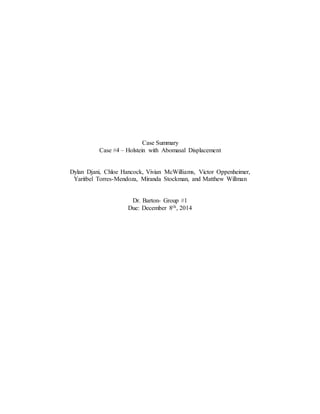This case summary describes a 3-year-old Holstein cow presenting with a history of decreased milk production, diarrhea, anorexia, abdominal distension, and depression over 3 weeks. Upon examination, the cow showed signs of dehydration and metabolic alkalosis. Diagnostic testing revealed findings consistent with a left displaced abomasum, including hypochloremic metabolic alkalosis. Radiographs and bloodwork ruled out other potential causes, confirming the diagnosis of a left displaced abomasum as the primary disease.






